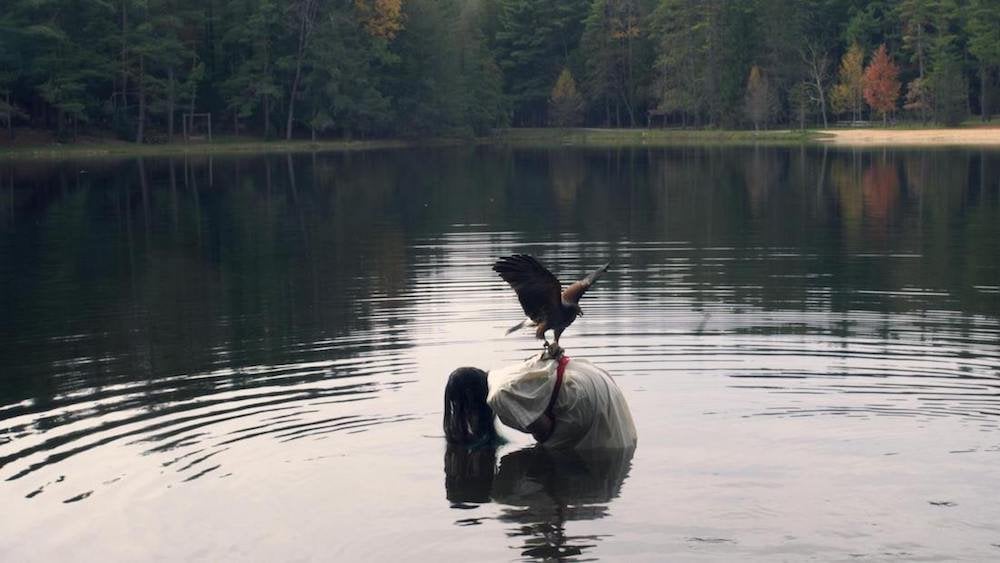Emic Etic?
2019 - Sculpture (Sculpture)
Dimensions variable
Jorge Satorre
In 1872, a German scientist, Sir Julius von Haast, found the fossilized remains of a giant bird in New Zealand, that was soon connected to the Maori legend of the Hokioi. The Maori folklore recounts the story of an eagle of immense proportions that was said to be capable of devouring human beings. The bones uncovered by the scientist included a femur, one rib, and two claws. That finding turned a ‘myth’ into a ‘scientific fact’. More recently, it was discovered that Haast’s eagle evolved from The Little Eagle of Australia over hundreds of thousands of years to become approximately fifteen times larger than its original size. This discovery is the starting point for Jorge Satorre’s work Emic Etic? . The title of Satorre’s project is based on the principle of methodological difference between records. Referencing the natural science museum tradition of making replicas of species in their collections, Satorre produced scale models of the evolutionary process of the eagle fossil discovered by Haast. The artist reproduced the evolutionary process of the Haast eagle in reverse by embracing the characteristics of clay, which reduces in size by 15% when fired. In order to achieve this, Satorre cast and fired replicas of the four original bones from the Haast eagle several times over until they became the size of the bones of the Little Eagle of Australia. The process-oriented work considers how Westernized methodologies of discovery and science intersect with cultural mythologies; how the scientific and the supernatural don’t always necessarily discount one another.
Jorge Satorre’s practice prioritizes manual processes and experiments with different materials in specific historical or geographical contexts. The artist has developed a series of responses to uncover gaps that are considered irrelevant and that have been excluded from hegemonic narratives, seeking to create doubt around the issues he addresses. Originating projects with drawing as the primary medium, Satorre claims and champions unrepresented opinions regarding the revelation of subaltern truths. It is not unusual for the artist to collaborate with researchers and specialists from other fields such as historians, geologists, writers, or other artists who contribute to determining each project’s specificity.
Colors:
Related works sharing similar palette
» see more

© » KADIST
Michael Rakowitz
2017The Ballad of Special Ops Cody by Michael Rakowitz is a serio-comic stop motion animated film in which an everyday African-American G...

© » KADIST
Elisheva Biernoff
2009In her recent work, Biernoff is interested in investigating fictions and fantasies embedded in the remnants of consumer culture (for example magazines) or through ephemera such as postcards and old photographs...
Related artist(s) to: Jorge Satorre » Erick Beltrán, » Ignasi Aballí, » Adrià Julià, » Azucena Vieites, » Centro Cultural Montehermoso, » Diego Berruecos, » Dora GarcíA, » Fermín Jiménez Landa, » Fernando GarcíA, » Gilles Deleuze
» see more

© » KADIST
Dora Garcia
2008Dora Garcia’s work is a result of institutional critique and more generally that of language, following the conceptual artists of the 1960s like Weiner and Kosuth and Fraser from the 1980s and 1990s...

© » KADIST
Erick Beltran
2010In his posters, prints, and installations, Erick Beltrán employs the language and tools of graphic design, linguistics, typography, and variations in alphabetical forms across cultures; he is specifically interested in how language and meaning form structures that can be misconstrued as universal...

© » KADIST
Dora Garcia
2012KLAU MICH is a TV and performance project by Dora García with Ellen Blumenstein, Samir Kandil, Jan Mech, TheaterChaosium, and Offener Kanal Kassel, during the 100 days of dOCUMENTA (13)....
Related works found in the same semantic group
» see more

© » KADIST
Alicia Smith
2018The title of Alicia Smith’s video work, Teomama , means “God Carrier” in the Aztec language of Nahuatl...

© » KADIST
This place you see has no size at all… December 4, 2009 – February 7, 2010 A project curated by Jennifer Teets after her residency at Kadist Art Foundation, including new and existing works by: David Adamo, Mark Aerial Waller, Mariana Castillo Deball, Asli Cavusoglu, Alex Cecchetti, Kate Costello, France Fiction, Darius Miksys, Michael Portnoy, Tania Perez Cordova, Pietro Roccasalva, Alexander Waterman, Roger Worms Writings by Mark von Schlegell Sir/Madam, Everything I am about to tell you began with a sighting of a heron in a tree...

© » KADIST
Cecilia Bengolea
2018Lightning Dance by Cecilia Bengolea is a black and white video that considers the relationship between extreme weather and the body...



